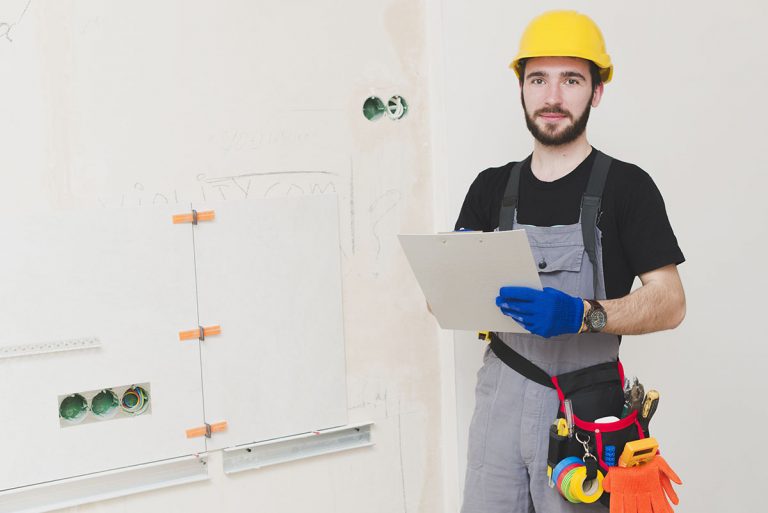Electrical works in construction don’t only revolve around contracts involving the main project. They may also include services in support of electrical supplies for construction operations like installation of power systems for construction equipment and tools. Sometimes, the electrical subcontractors also have to take on repairs and maintenance tasks. With this much role, electrical subcontractors need to keep up with their general contractors. And to do that they need to stay up-to-date with their tools and equipment like contractors hiring them.
Emerging electrical technologies are quickly changing the world for many electrical subcontractors. The newest technologies released are quickly transforming the electrical construction industry into a more automated, connected, and efficient sector.
In fact, in the past five years, the industry experienced significant changes when it comes to working methods due to tech trends. But the benefit doesn’t stop there. The industry also saw considerable cost efficiencies, which made a lot of electrical firms enjoying multi-figure profits.
Yet, the development of construction technology still keeps on booming. For instance, many believe that more automated technologies are likely to gain momentum in 2019. It may also be the breakthrough year of augmented and virtual realities in construction. And as they become mainstream in the industry, fewer projects will exceed deadlines or budgets.
This year and the coming years, it is predicted that wearable technologies like smart glasses, smartphones, smart clothing, sensor, and so on will boost efficiency and safety at the site. For electrical subcontractors who do an equally risky job as other construction workers, it will be helpful if they have a more modern personal protective equipment like heated jackets or cooling vests or non-conductive suits.
With these and other electrical technologies on hand, significant benefits are expected like safer operation, reduced costs, and shorter lead times. Below is a rundown of the most notable electrical construction technologies today that are shaping the work of the electrical construction industry.
1.Robotics
Whether it is on building or electrical works, automation is continuously transforming the construction industry. Many electrical contractors are now turning to robotics and automation technologies. A good example of robotics used in electrical construction is an underground wire-cutting tool, which can be operated from afar using a remote control. This makes the work safer for linemen who are at risk of electrocution. This also leads to lesser manual maintenance and loss of time.
2.The smart grid
Smart technology is also taken advantage of in electrical construction. The smart grid has sensors and other smart features, enabling utility companies and their customers alike to access more detailed information on energy usage. The information delivered is more accurate and is used to come up with solutions to control energy usage. For electrical subcontractors, you will play a key role to enable a transition to the smart grid.
3.Wearables
As we mentioned earlier, it would be nice to have all technicians use modern wearables to enhance their safety at the site. We know how much electricity can be so dangerous and one strike of it on you can kill you. An example of a smart wearable we saw on the market is the Proxxi bracelet. This wearable has a built-in sensor in it that vibrates when you come too close to an element with high voltage electricity. Another wearable you should consider investing in for your technicians is the SolePower smart boots. It has installed GPS chip, lighting, temperature sensor, and can connect to the cloud so you can monitor the data it records when used. The boots also warn users about overheating as well as close proximity to hazards.
4.Energy-efficient Lighting Technologies
More of a product, most electrical contractors today recommend the use of LEDs in their projects. LEDs, as we already know, are a significant development in lighting technology. They use PCBs and other components that are more efficient and durable than other types of lamps. New designs of LEDs are expected to come out in the coming years.
Today, LEDs are integrated with other smart technologies so they can be remote controlled. Others are temperature-sensitive or motion-sensitive. Some others even use voice technology to control LEDs. Alexa is often the choice for this. In the future, more high-tech sensors will be used so the LED lights can adapt to the user’s habits and will no longer need commands to operate.
5.Mobile Technology
The role of mobile phones in our lives has grown from a simple communication tool now to an indispensable technology that can be used in almost any aspect in life. In construction, mobile technology is used to improve efficiency. Through subcontractor software, members are able to track priorities and pain points while looking into critical components of running a service business.
For electrical contracting businesses, reporting serves as a key pillar to deliver impeccable service to clients. However, collaboration and communication can become a hurdle. Electrical subcontractor software can help address these problems by connecting the subcontractor with its technicians on the field in real-time. For example, electrical subcontractors would greatly benefit from a digital logbook where job orders and their details can be organized. Log histories are also available for better accounting. It is quick and easy for them to create reports too that they should submit to their clients. Software that allows subcontractors to view energy data and integrate remote alarming from equipment is also favorable to use.
Furthermore, electrical subcontractors can now electronically record data from the field and office and store them in one location. They are also safely backed up on the cloud instead of having stacks of paper or physical storages that can easily get mixed up and lost or even damaged.
Mobile technology is also beginning to use geolocation (GPS) to take photos of equipment and tag them where they are in the facility. This makes it faster to locate and easier for the firm to maintain.
Overall, these functionalities of an electrical subcontractor software like Pro Crew Schedule are the ones providing relevant data at the electrician’s fingertips. Technicians only need to carry a compact smartphone with them at the site instead of bringing along paper logs and diagrams which can be destructive.
However, to truly drive efficiency, the software you use should incorporate more than data availability and remote, mobile access. Collaboration and control are very important features too. At most sites, there are various stakeholders using the same equipment at different schedules. This difference in schedule can create communication silos and confusion so having a collaboration tool where the next shift can review what the first shift worked on can help achieve a smoother workflow.
Don’t Confuse Reporting with Real-Time Data
In the past, electrical subcontractors would only rely on Excel to create weekly productivity reports. As you know, reports are necessary to keep track of everything happening in the project but don’t expect this to make a big impact on your team’s productivity.
Instead of reports, real-time data that combine qualitative and quantitative information from the site are what can improve your project outcomes. It is important that these data are accurate and timely so that the subcontractor can make better decisions.
Hence, by implementing electrical subcontractor software with collaboration features like Pro Crew Schedule real efficiency can be achieved.
Final Thoughts
The above are just five of the many high technological trends that every electrical subcontractor needs to know. Keep in mind that technology has two major roles in your firm. First is to improve labor productivity with the use of software, which can be used to schedule daily work, identify the root cause of interruptions, and remove barriers in communication. Second is to replace the time and effort of human laborers with more accurate and predictable





